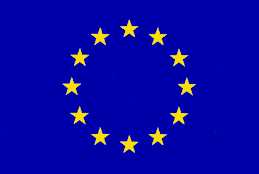Healthy Old Europe
Nicholas Eberstadt and Hans Groth
From Foreign Affairs, May/June 2007
Summary: The population of western Europe is aging steadily, and the region's birthrate is well below the replacement level, but Europe's elderly are exceptionally healthy. That means they could be more productive for longer than their predecessors were. If western European governments learn to tap this potential, healthy aging could become the region's next great economic asset.
Nicholas Eberstadt holds the Henry Wendt Chair in Political Economy at the American Enterprise Institute and is Senior Adviser to the National Bureau of Asian Research. Hans Groth is a Member of the Board of Directors for Pfizer-Switzerland AG and a Pfizer Global Health Fellow.
AN UNTAPPED ASSET
Over the past generation, western Europe has fallen behind in its long-term economic competition with the United States. Since 1980, the United States' total GDP growth has outpaced that of the EU-15 (the 15 states that belonged to the European Union then) by an average of 0.8 percent per year. Social and economic policies are, of course, partly responsible for western Europe's economic deceleration. But demographic trends have also had a major influence. As is widely recognized and commonly bemoaned, the population of western Europe is steadily aging, and the region's birthrate, looking ever more anemic, is well below the replacement level. The specter haunting western Europe today is the prospect of inexorable demographic decline.
But whatever the demographic challenges, the economic implications of western Europe's population outlook are by no means unremittingly bleak. Western Europe's aging population is exceptionally healthy. As a result, western Europeans are more capable of remaining productive into their advanced years now than they used to be, and perhaps even more so than their American counterparts.
Western Europe could reap economic benefits from the healthy aging of its population. But to capitalize on these incipient opportunities, western Europeans will have to change the way they choose to live and work today. If they hope to remain economically competitive in the years ahead -- and wish to enjoy continuing improvements in living standards -- western Europeans must face the continent's new demographic realities squarely. Otherwise, they will in fact be resigning themselves to slow growth, stagnation, or even long-term relative decline.
BABY BUST
In 2005, the population of western Europe was larger than that of the United States by nearly 100 million people; by 2030, it is expected to be greater by just 35 million. Whereas the U.S. population is anticipated to grow by over 65 million during that period (implying a robust rate of increase of about 0.8 percent per year), western Europe's population is expected to remain virtually stagnant (growing by less than one percent over the entire 25-year period). A divergence in the structures of these populations is also under way. In 2005, western Europeans outnumbered Americans in virtually every age group, exceeding Americans by 37 percent among people of prime working age, between 35 and 49 years old. By 2030, however, there will be nearly as many Americans as western Europeans in the 35-to-49-year-old category and many more Americans under the age of 30.
Western Europe beats the United States only in the 80-year-plus age group. In 2005, western Europe's population was already grayer than the United States': its median age was about 40, compared with 36 in the United States. And while the median age of western Europeans is expected to rise by an average of two days every week between now and 2030, reaching close to 47 years by 2030, the median age of Americans is projected to be just 39 years by then -- still less than that of western Europeans today.
Opinión: El artículo anterior es parte de las revistas de análisis conyuntural sacado del Foreign Affairs ya que el autor Nicholas Eberstadt es un especilista en cuestiones de polític internacional por ser miembro de The President's Council on Bioethics, 2006 United States Commission on Helping to Enhance the Livelihood of People, 2005, Board of Scientific Counselors, National Center for Health Statistics, U.S. Department of Health and Human Services, 2003 entre otras cosas, ademàs de hber escrito otros 5 artículos màs en la revista Foreign Affairs. Este artículo lo puede leer cualquier persona que esté interesada en el tema del desarrollo dela Unión Europea, en mi caso, me interesa conocer el crecimiento en cuestiones económicas y como lo muestra este artículo, también en cuestiones de población. Se puede encontrar que el autor hace una opinión acerca de las medidas que deberían de tomar los paises de la Unión Europea, en especial lo de Europa occidental para que modifiquen la forma de trabajo y eso les ayudará a traer un mejor crecimiento económico, de lo contrario, podrìa haber una recesiòn. Por esta misma razón, tambíén es de análisis conuntural ya que esta enfocado a persudiar a los gobiernos europeos para tomar las decisiones en cuanto a mayor competencia económica con Estados Unidos.
Bibliografía:
Eberstadt, Nicholas, Groth, Hans. Healthy Old Europe. Foreign Affairs (May/June 2007)

No hay comentarios:
Publicar un comentario